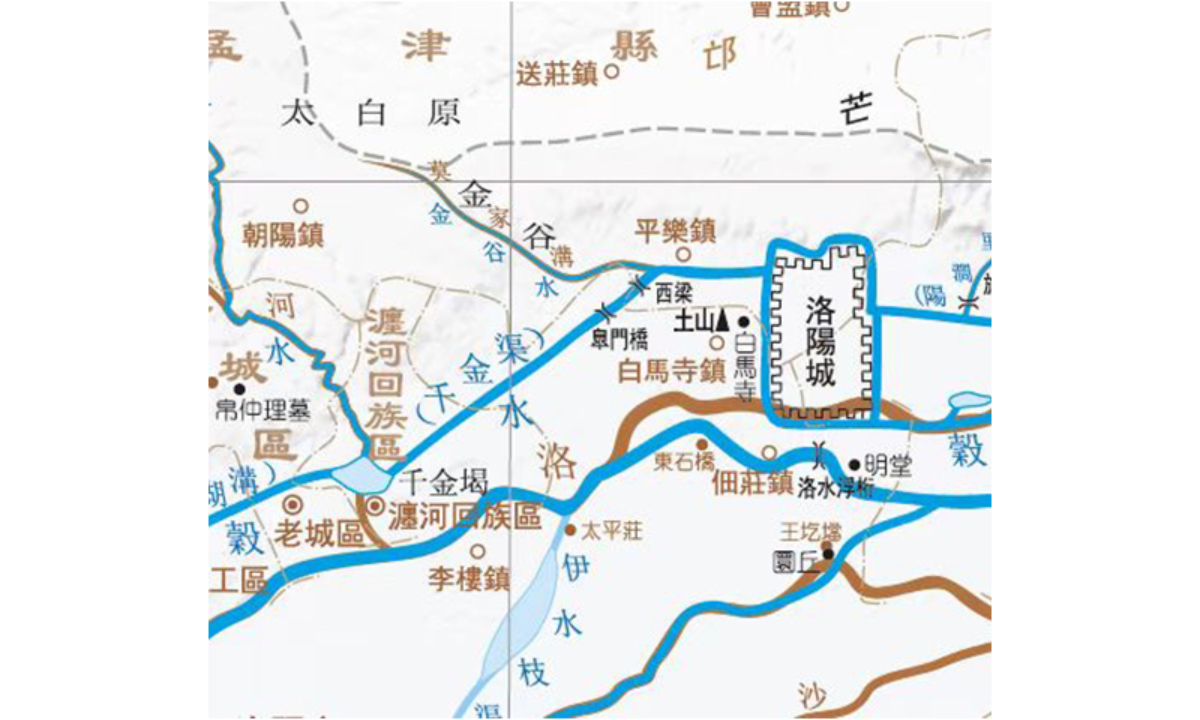ARTS / BOOKS
Respect nature: Chinese ancient classics inspire modern water conservation research

A map created by a team from Fudan University explains the functions of the well-known ancient Chinese water conservation project in Qianjin'e. Photo: Courtesy of Li Xiaojie
For thousand of years, Chinese writers have travelled all over the country to take down notes about the geographical conditions of each city. Among them, a classic based on the rivers that cities were built around was composed by Chinese writer Li Daoyuan, which describes the ancient waterways and canals. It is now being studied again by a team in Shanghai. For them, comparing the ancient waterways with the modern status of the rivers is "essential in both landscape governance and research."
"After systematic research into this eminent book - which is full of ancient people's wisdom - one of the important things we can learn is that respecting nature is the top priority in water conservation projects and city landscape designs," professor Li Xiaojie of the center for historical geography of Fudan University told the Global Times in a recent interview.
During the Northern Wei Dynasty (386-534), well-known Chinese geographer and writer Li Daoyuan composed his 40-volume, 300,000-character book, Commentary on the Water Classics, after studying the original literary version, Water Classics. He later expanded the river records to 1,252 from the original 137.
In 2011, professor Li decided to build a team to use drawing software and 3D modelling to recreate the waterway situations on a map based on the book description.
3D recreation
So far, the 13-member team has completed research into four rivers including Weihe River, the largest branch of the Yellow River, and Luohe River, a downstream branch of the Yellow River. The team has been to every river, where they would stay at least two weeks each time.
"We marched around 10 kilometers with our luggage every day but we never felt tired. There were always so many problems to solve every day," said Li.
Every evening the students on the field trip would write down their travel journals and send them back to Li via e-mail.
During field research at Luohe River in Central China's Henan Province, in order to find out the specific location of an ancient city called Yanyangcheng which has disappeared, the team members walked into the local villages to find some traces.
"We knocked on almost every household's door to find out some information but we didn't get much of it because of the language barrier. It was not until almost dawn when we finally heard of the location from an aged villager."
In Commentary on the Water Classics, a total of 2,800 cities are recorded, with details including diverted rivers and deserted towns. Still, the process of recreation took a lot of effort. "Thanks to the technology, we can restore an accurate scene on the map," said Li.
"Ancient people knew really well how to incorporate the power of nature into technical considerations," Li said, giving the example of Qianjin'e, one of the most famous ancient water conservation projects in Luoyang, Henan. Qianjin'e has since disappeared, but it was a "perfect combination of nature and human interference," Li noted.
In order to lead the river into the city for irrigation in ancient Luoyang, the officials built a canal branch by separating a northwest-southeast bound river, and led a branch of the river to flow eastbound. However, the canal water wasn't enough to support the citizens. To solve that, in the northern side of the canal branch, the officials built a reservoir and built a channel leading the water to the canal branch where the waterways would converge and flow together to the city.
To get the results is not easy for a city that has disappeared. The team has also done a lot of text proofreading and fieldwork, used 3D modeling software, and gradually recreated the model after repeat deductions.
Reference for modern times
According to Meng Lingwei, a sociological critic, the new concepts, trends and practices of river management "are undoubtedly worthy of study."
"At the same time, we also need to learn from the experience and methods of ancient Chinese waterway management. A large number of facts show that our ancestors not only accumulated a lot of valuable experience in this area, but also had in-depth methods for dealing with rivers using nature's help."
The ancient Dujiangyan Irrigation System is an example. Built in the Warring States Period (475BC-221BC), the system still distributes water to farmland on the Chengdu plains in Southwest China's Sichuan Province.
The characteristics of the entire Dujiangyan dam-free water diversion and irrigation have also been recorded in Commentary on the Water Classics. "The thoroughness of the idea of taking advantage of nature is exemplary," Meng noted.
For professor Li, Commentary on the Water Classics is not only a record of the natural landscape over 1,000 years ago, but also a detailed description of humanity and culture and a "treasure" for today's reference.
